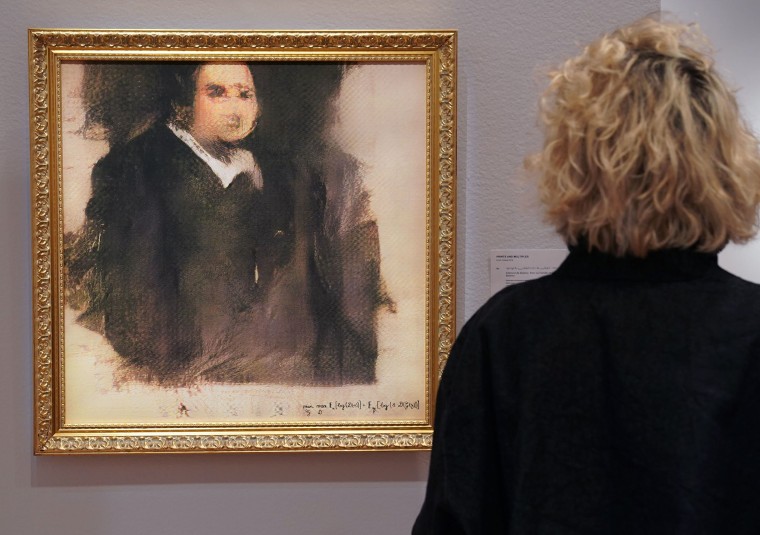It's been called "horrible art," a blurry portrait with a subject whose eyes are comparable to those of Frosty the Snowman — but that didn't stop "The Portrait of Edmond Belamy" from fetching 43 times its expected price at Christie's auction house when it went on the block last week.
The controversial canvas, which sold for $432,500, is believed to be the first auctioned work of art created using artificial intelligence.
The portrait features a fictional man, "possibly French," and appears far from finished. Clad in a black coat with white collar, Belamy is positioned slightly left of center. His nose and mouth are nonexistent. If you were to squint, it might be passable as one of the Old Masters.
But of course, all of art is subjective.
Obvious, a collective of artists and artificial intelligence researchers based in Paris, created the work by feeding their system 15,000 portraits spanning from the 14th to 20th centuries.
Hugo Caselles-Dupré, a member of Obvious, explained the origins of the painting, noting the two parts of an algorithm, the generator and the discriminator.
“The Generator makes a new image based on the set, then the Discriminator tries to spot the difference between a human-made image and one created by the Generator,” he said. “The aim is to fool the Discriminator into thinking that the new images are real-life portraits. Then we have a result.”
Keeping with tradition, the bottom of the work is signed "min G max D Ex [log (D(x))] + Ez [log(1 - D (G(z)))]" — a piece of code from the algorithm used to create the work.
The debate over whether machines can make art — and whether the Old Masters would be rolling in their graves — is just scratching the surface.
The sale is also raising questions about ethics when it comes to the marriage of artificial intelligence and art.
"Edmond Belamy" was created using code that Robbie Barrat — a Stanford University researcher who had gained notoriety for teaching a computer to write rap lyrics, based on the work of Kanye West — wrote when he was 17.
Barrat shared the free code on GitHub at the time, a common practice among coders.
However, after he saw the images for sale in April, Barrat followed up and asked for credit, saying he was under the impression this was an open source project.
“Here's the code to the network they copied. If any of you guys want to make a quick $10,000 from my work, now is the perfect time,” Barrat tweeted, referring to the starting price Christie's had set for the portrait.
Obvious countered by posting a screenshot of a conversation the collective said it had with Barrat in April, in which he apparently wrote: “You don’t owe me any credit or anything.”
Obvious has since tweeted that it has credited Barrat and talked about his contribution in interviews. Barrat and Obvious did not immediately respond to a request for comment by NBC News.
Either way, the Stanford researcher clearly isn't impressed.
“It’s horrible art, from an aesthetic standpoint,” he told the Washington Post. “You have to put some work into it to call it art. It’s something that everybody can do. You can clone this from GitHub, start your computer and start doing it. I don’t know that that’s what art is about."
